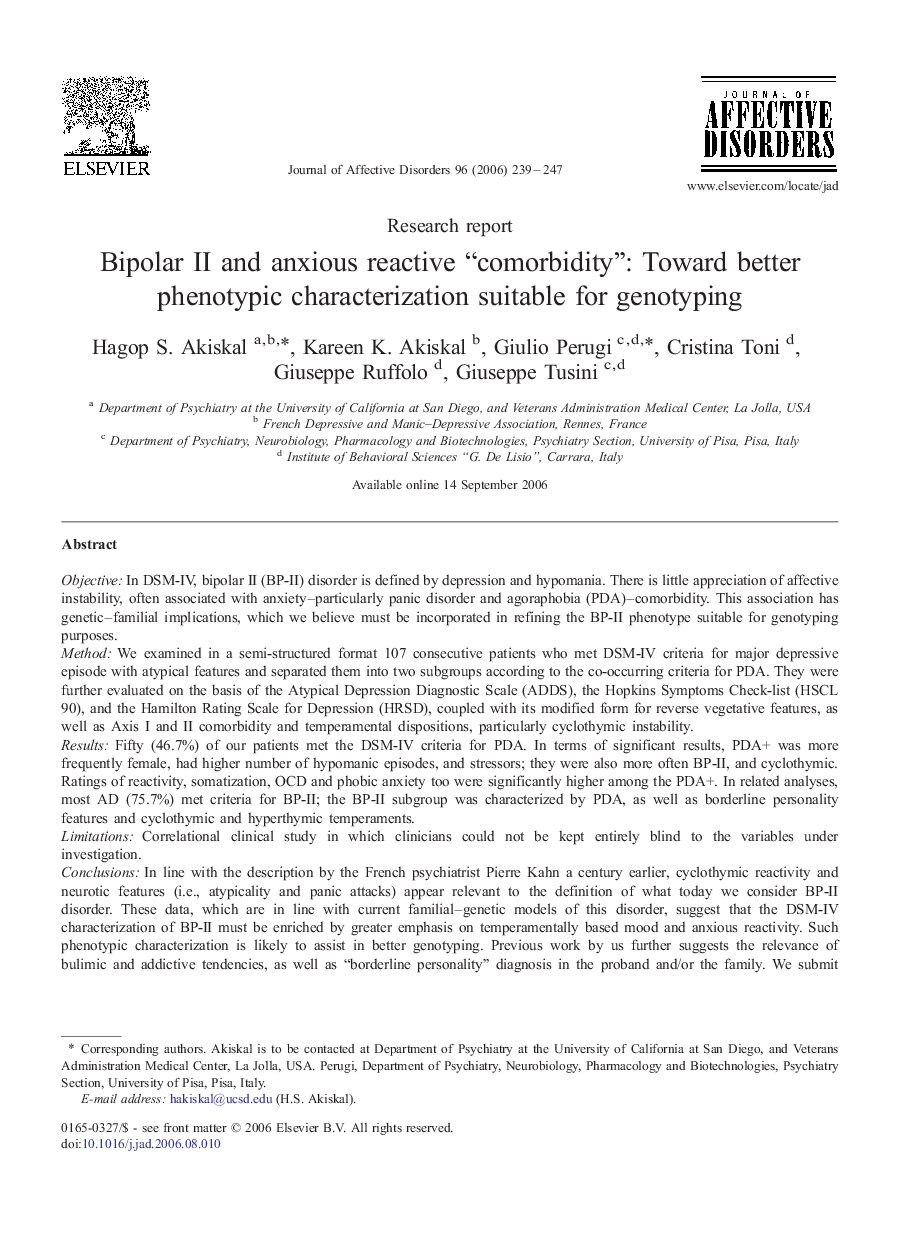| Article ID | Journal | Published Year | Pages | File Type |
|---|---|---|---|---|
| 4187800 | Journal of Affective Disorders | 2006 | 9 Pages |
ObjectiveIn DSM-IV, bipolar II (BP-II) disorder is defined by depression and hypomania. There is little appreciation of affective instability, often associated with anxiety–particularly panic disorder and agoraphobia (PDA)–comorbidity. This association has genetic–familial implications, which we believe must be incorporated in refining the BP-II phenotype suitable for genotyping purposes.MethodWe examined in a semi-structured format 107 consecutive patients who met DSM-IV criteria for major depressive episode with atypical features and separated them into two subgroups according to the co-occurring criteria for PDA. They were further evaluated on the basis of the Atypical Depression Diagnostic Scale (ADDS), the Hopkins Symptoms Check-list (HSCL 90), and the Hamilton Rating Scale for Depression (HRSD), coupled with its modified form for reverse vegetative features, as well as Axis I and II comorbidity and temperamental dispositions, particularly cyclothymic instability.ResultsFifty (46.7%) of our patients met the DSM-IV criteria for PDA. In terms of significant results, PDA+ was more frequently female, had higher number of hypomanic episodes, and stressors; they were also more often BP-II, and cyclothymic. Ratings of reactivity, somatization, OCD and phobic anxiety too were significantly higher among the PDA+. In related analyses, most AD (75.7%) met criteria for BP-II; the BP-II subgroup was characterized by PDA, as well as borderline personality features and cyclothymic and hyperthymic temperaments.LimitationsCorrelational clinical study in which clinicians could not be kept entirely blind to the variables under investigation.ConclusionsIn line with the description by the French psychiatrist Pierre Kahn a century earlier, cyclothymic reactivity and neurotic features (i.e., atypicality and panic attacks) appear relevant to the definition of what today we consider BP-II disorder. These data, which are in line with current familial–genetic models of this disorder, suggest that the DSM-IV characterization of BP-II must be enriched by greater emphasis on temperamentally based mood and anxious reactivity. Such phenotypic characterization is likely to assist in better genotyping. Previous work by us further suggests the relevance of bulimic and addictive tendencies, as well as “borderline personality” diagnosis in the proband and/or the family. We submit that these conditions, rather than being “comorbid,” constitute, along with BP-II, a spectrum of overlapping underlying genetic diatheses.
